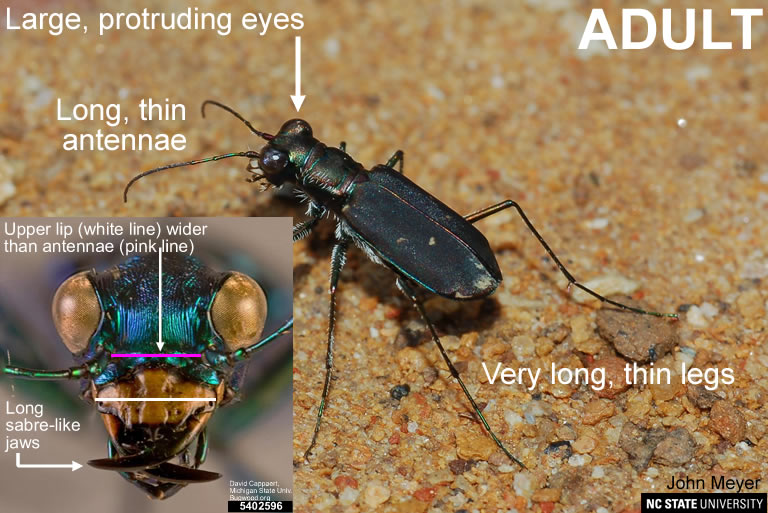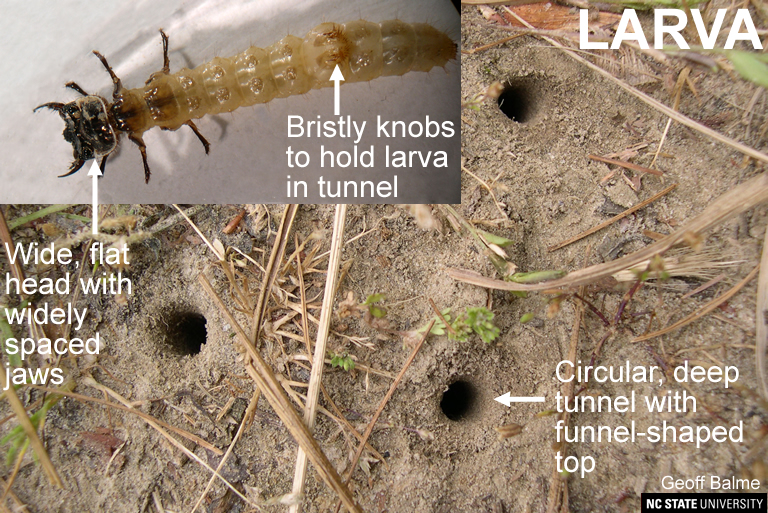Tiger Beetle
go.ncsu.edu/readext?562870
en Español / em Português
El inglés es el idioma de control de esta página. En la medida en que haya algún conflicto entre la traducción al inglés y la traducción, el inglés prevalece.
Al hacer clic en el enlace de traducción se activa un servicio de traducción gratuito para convertir la página al español. Al igual que con cualquier traducción por Internet, la conversión no es sensible al contexto y puede que no traduzca el texto en su significado original. NC State Extension no garantiza la exactitud del texto traducido. Por favor, tenga en cuenta que algunas aplicaciones y/o servicios pueden no funcionar como se espera cuando se traducen.
Português
Inglês é o idioma de controle desta página. Na medida que haja algum conflito entre o texto original em Inglês e a tradução, o Inglês prevalece.
Ao clicar no link de tradução, um serviço gratuito de tradução será ativado para converter a página para o Português. Como em qualquer tradução pela internet, a conversão não é sensivel ao contexto e pode não ocorrer a tradução para o significado orginal. O serviço de Extensão da Carolina do Norte (NC State Extension) não garante a exatidão do texto traduzido. Por favor, observe que algumas funções ou serviços podem não funcionar como esperado após a tradução.
English
English is the controlling language of this page. To the extent there is any conflict between the English text and the translation, English controls.
Clicking on the translation link activates a free translation service to convert the page to Spanish. As with any Internet translation, the conversion is not context-sensitive and may not translate the text to its original meaning. NC State Extension does not guarantee the accuracy of the translated text. Please note that some applications and/or services may not function as expected when translated.
Collapse ▲- Common Name: Tiger Beetle
- General Category: Beneficial Predator
- Taxonomic Classification: Coleoptera: Carabidae
- Scientific Name: Many species
Description
All tiger beetles are predatory as both adults and larvae. The adults are fast runners, and with their powerful jaws, they live up to their common name of “tiger.” Some are active in the day, while others are active at night. For example, the Carolina Tiger beetle is nocturnal and gregarious, that is it sometimes hunts in “packs”. The larvae reside in deep, straight tunnels, where they ambush passing prey.


Identification
Review the images for tips on how to identify these predators.
Adults
Often brightly metallic body in a variety of colors; very long, thin legs; long, thin antennae; large mouthparts; large protruding eyes; very fast runners.
Larvae
Somewhat grub-like but with obvious legs; very large, flat head that caps the top of tunnels; large, widely spaced mandibles for grasping prey; bristly knobs on back that help to hold larva in tunnel when attacking prey.
Value in Pest Management
These beetles appear to be generalist predators, feeding on any arthropods on the soil they can overwhelm. It is unclear how or if they contribute to pest management. However, where they occur in large numbers, they undoubtedly have an impact on local arthropod populations. They are not sold commercially.
Origin and Distribution
Native, throughout North America.


